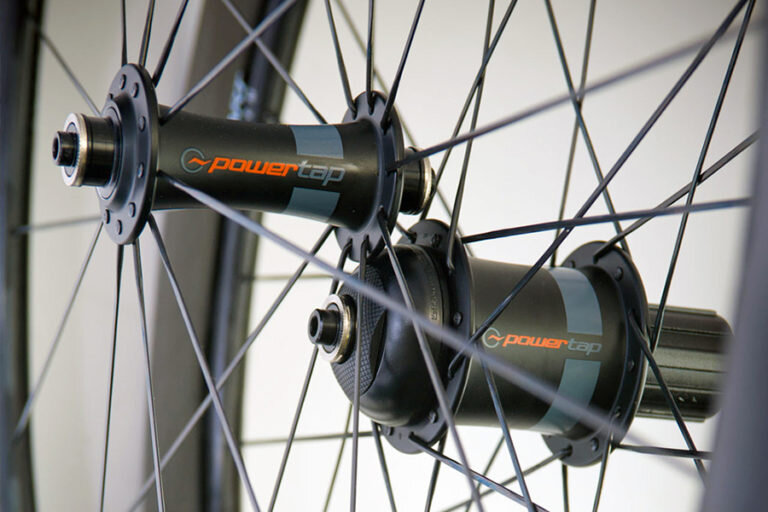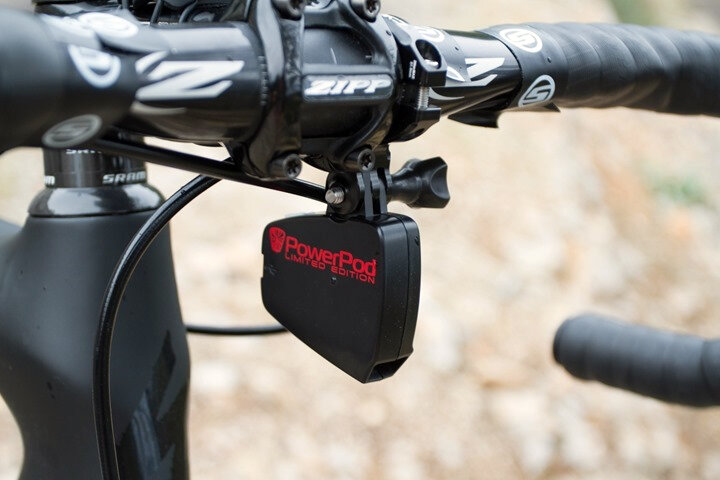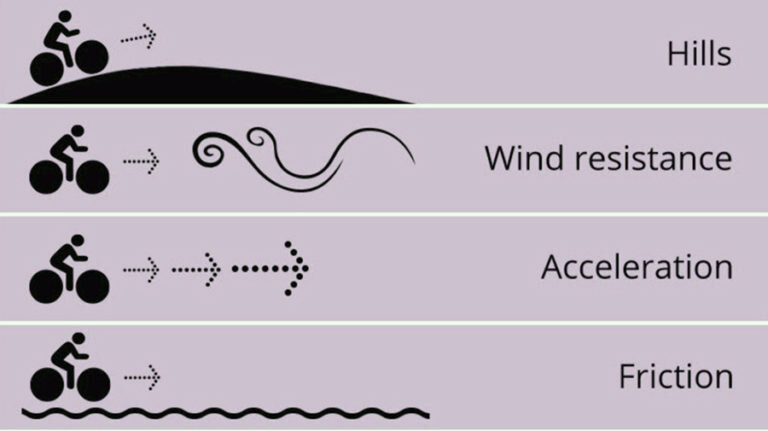Advice on Power Meters choice, trying to avoid the most common mistakes
These devices are becoming increasingly popular amongst our clients, but it can be tricky to choose the right one / get the best use out of it. Therefore, with help from ex pro rider Graeme Freestone King (who now runs the official training and service centre for Campagnolo in the UK), we’ve put together some pointers.
01. USEFUL NUMBERS, YES, BUT HOW TO USE THEM CORRECTLY?
Like any measurement tool, it’s not so much what the Power Meter can tell the user, it’s about how the user makes further use of that information.
The first mistake that many users of PMs make is to treat the data as absolute and so to compare the fact that they are outputting (according to their PM), say 400W against professional rider “x” or club-mate “y” at 600W. The problem is one of calibration and the key is to use the number given more like an estimate. Using the figure as an absolute comparison against another PM might not be a great plan. It is better to use a PM as a comparative tool – so to find, for instance, your Functional Threshold Power using that PM, then to base your training on that, rather than going to a lab, getting FTP measured on a Wattbike and then expecting to be able to make a direct comparison to your own PM. You might be lucky, the two devices might be close enough for effective comparison and to base training on one, on a result from the other – but you might not be and a lot of time and effort might be wasted. There are ways to look at your power as measured in a lab and compare it to your own PM but remember that all the training that you do based on power requires you to be conscious of these differences.
02. VERY IMPORTANT EXTERNAL FACTORS:
In terms of who can best make use of PMs, the volume of data produced is large and has to be viewed against a lot of other data to have real worth. You need to consider rest, nutrition, hormonal state (obviously of key importance for female athletes but also in males, especially adolescents and men in middle age), times of day that you are training and so on… this is not a job for the faint-hearted. So a PM may only be part of the picture – a truly competent coach who can help you make sense of the data is also pretty much indispensable, if you are not just acquiring a piece of kit to give you bragging rights on Strava!
There is no doubt that a good PM, with a relatively high degree of accuracy, in the hands of a proper rider-coach pairing is a valuable tool and at the professional level, a virtually essential tool, these days.
03. DIFFERENT CRANK-BASED PRODUCTS TO CONSIDER:
In terms of products available and choices, Campagnolo maintain relationships with three manufacturers: SRM, Power2Max (P2M) and Stages. All three buy cranks – and in the case of SRM and P2M, chainrings – and re-work them to include the relevant strain gauges. This means that SRM and P2M have exactly the right chainring spacing and will work seamlessly and without interfering with warranty in any way, with the Campagnolo systems that they are designed for. Stages of course is a left crank-based system so there is no problem in terms of the shifting being affected and the same crank is used for Chorus and Record, with a second option available for Super Record (because of the Ti spindle).
SRM Campagnolo 4-Bolt Power Meter Crankset
Power2Max Campagnolo Power Meter Crankset
Stages Campagnolo left Crank Power Meter
04. COMPATIBILITY ISSUES:
Other makers such as Quark and of course Shimano, now, offer crankset based systems but drivetrain compatibility needs to be taken into account – front shifting in mixed systems is always compromised – as is warranty. Mating mixed systems together will always negate a manufacturer’s warranty and in any case, by the time you have spent the money to acquire a suitable bike, groupset and power measurement device, you’ll have spent a lot of money – so it makes no sense to then have sub-optimal performance and to void the functional, as well as the materials and workmanship warranty.
Epoca R60 with Quarq Power Meter Crankset, combined with Campagnolo Super Record EPS groupset
05. THE ALTERNATIVES OF SHOE, PEDAL AND HUB SYSTEMS:
There are also shoe, pedal and hub-based systems to consider. PowerTap as a hub-based system is a point of reference for many and can be ordered to mount any maker’s cassette. In pedals, Garminprobably lead that market and their system is portable bike-to-bike (like a rear wheel based system) although frequent swapping in and out of pedals is probably best avoided … John Luck from Spain are offering a shoe-based system but experience of that in the market is fairly thin at the moment. All of these systems interface with a Garmin or some other ANT+ enabled devices to display the power measurement they make.
Pedals are very portable but you are of course stuck with the cleat system, so if you prefer, say Time to Look Keo, they are maybe not the best option.
A rear-wheel based option is quite portable bike-to-bike but in some cases you may find it necessary to tweak the rear derailleur settings as you swap the wheels in and out (unless you take the time to accurately shim the cassettes so that they all sit in exactly the same place relative to the frame on all your wheels, assuming that is possible which in some cases it may not be). You also (unless you buy two hubs) have to make a choice between rimming with a race-type rim, or a training-type rim. You may and may not want to train all winter on a carbon deep-section and you may and may not be happy to ride on a more robust, training type rim… As mentioned, shoe-based systems are so far not well proven but do of course potentially offer the ultimate in portability and cross-compatibility.
PowerTap Power Meter hubs wheelset
Garmin Vector Pedal Power Meter System
Power Meter shoes by Spanish shoemaker John Luck
06. THE AMAZING POWER-POD SYSTEM:
There is one system in the market that makes a calculation of power, as distinct from a relatively direct measure like strain gauges at the crank, pedal, in the shoe or at the rear hub – PowerPod. It uses a complex algorithm and a set of accelerometers, along with an airspeed measurement to calculate power based around road (therefore air), speed, slope and bike movement measured by the x, y and z plane accelerometers. Properly and carefully set up, testing against PowerTap seems to produce results that are within a fairly tight (+/- 2%) range of compared accuracy. It doesn’t respond quite as quickly as a strain-gauge based system so for measuring absolute power peaks it’s perhaps not as good as some other systems – but its real benefit is that it can be swapped from bike to bike quickly and the set-up routine is quick, involving a 10 minute, normal, road ride. Obviously its limitation is that it won’t work on a home-trainer … no airflow! But it does not interfere with the transmission in any way so you are not making compromises with pedal system, possibly shifting or your choice of rear wheel on, say, race day.
PowerPod is the only power meter that attaches to your handlebars–no need to change your crank, wheel, pedals, or bottom bracket.
PowerPod is the only power meter that moves from bike to bike in less than one minute.
PowerPod transmits its data in ANT+ and (optionally) Bluetooth Low Energy (BLE)
07. REMEMBER THAT THE GAINS ARE…… MARGINAL:
As a general conclusion on this subject, we find that a lot of riders get very hung up on the numbers, just as they do on the minutiae of the aero performance of this or that bike or pair of wheels, etc – remember that the basics of rider position have to be right, nutrition and rest have to be right and the body needs to be in a general state to train properly before you start working on how to optimise training and then the plethora of fine detail that follows on from that. Marginal Gains (as “paying attention to detail” is now known, post Dave Brailsford) is all very well but remember they are *marginal* gains – so getting a proper bike fit with a bio-mechanic that has long and wide experience (rather than a flashy computer program, lasers, smoke and mirrors), a coach that actually has time and inclination to coach you properly as well as the knowledge to properly understand the output from and so to use modern technology like a PM, will pay bigger dividends in the end than any piece of hardware in and of itself. Above all, we always advise to ride your bike and enjoy riding your bike for it’s own sake – the rest follows. The great Bernard Hinault, five times TdF winner and winner of virtually every other significant race on the calendar once said: “for me, riding the bike was always a game” …that’s how it should be, before you will see the real advantages of PMs and other related technology.
And what did YOU choose and why? Please do share with us your experience with Power-Meters…
The great Bernard Hinault, who won the Tour de France five times
With the valued contribution of Graeme Freestone King of Velotech Cycling Ltd
Campagnolo Main UK Service Centre
Modular Cycle Mechanics Training to Nationally Recognised Standards












